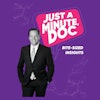
It is among the first lessons a child is taught: how to brush your teeth correctly. But what is "correct" when it comes to manual toothbrushing? According to the authors of a new study in the British Dental Journal, there are many different opinions as to which method is best, and that isn't good for the general public's oral health. Surprisingly, they also found a lack of instructions built upon clinical evidence for one of the most basic oral health maintenance routines.
"The unacceptably large diversity in recommendations on what toothbrushing method to use should concern the dental profession," wrote the study authors from the department of epidemiology and public health at University College London (BDJ, August 8, 2014). "Higher grades of evidence of effectiveness of toothbrushing techniques are required to inform professional bodies that develop guidelines on toothbrushing."
“The unacceptably large diversity in recommendations on what toothbrushing method to use should concern the dental profession.”
The researchers noted that most the six manual toothbrushing methods recommended by oral health professionals and dental associations today are from the early 20th century. The oldest, for children, dates back to 1913. One method, the Modified Bass, uses horizontal brush motions ranging from above to slightly below the gingival margin, while small circular motions focused over the gingival crevice are employed in the Hirschfeld technique, for example.
Despite the various methods available, "there appears to be no consensus among professional bodies on the best method of toothbrushing for the general population or for people of different ages or with particular dental conditions," the authors wrote. They noted that one study found a "wide diversity" of brushing advice when the recommendations for brushing from 10 different countries' pediatric dental associations were examined (International Journal of Paediatric Dentistry, May 2011, Vol. 21:3, pp. 223-231).
"Some dental professional organizations mentioned 'gentle motions,' others 'small circular motions,' 'short back and forth motions at chewing surfaces,' and 'avoid flicking and circular motions,' " the authors wrote. That study found a frequent disparity in general toothbrushing recommendations among the different dental associations, they noted.
In the U.S., the ADA has a clear, concise set of general brushing instructions on its MouthHealthy.org website with an accompanying video.
According to the ADA, the proper brushing technique is described below:
- Place your toothbrush at a 45° angle to the gums.
- Gently move the brush back and forth in short (tooth-wide) strokes.
- Brush the outer surfaces, the inner surfaces, and the chewing surfaces of the teeth.
- To clean the inside surfaces of the front teeth, tilt the brush vertically and make several up-and-down strokes.
- Brush your tongue to remove bacteria and keep your breath fresh.
In an older British Dental Journal study (August 9, 2003), researchers affiliated with Colgate-Palmolive explained that "traditional reviews of the literature concluded that no particular method is superior to any other, and it is more realistic to modify the patient's existing method of brushing, emphasizing the need to repeat the procedure on all available tooth surfaces." They responded by recommending a modification to the existing method of brushing that emphasizes "a systematic approach to maximize plaque removal." According to this review, that may not have occurred yet.
In the current study, the researchers examined different sets of information on brushing offered by textbooks, dental associations, research, and industry sources, as well as frequency and duration information. They refined the list of countries that they sourced dental association information from to a list of developed nations: Australia, Brazil, Canada, Denmark, Finland, Japan, Norway, Sweden, the U.K., and the U.S. The list was based upon the same standardized inclusion list used in the aforementioned International Journal of Paediatric Dentistry study, the authors noted.
Then they sought out guidelines from toothpaste and toothbrush brands that were available in all 10 countries. Dental textbooks in the dental hygiene section of the Eastman Dental Hospital in London were examined, as well as sources that were found via a relevant keyword search entered into Google Books. The latter exercise was also done in the native language of the different included nations. Lastly, in their literature search using Google Scholar, the authors sought clinical trials, observational studies, and opinion articles about brushing techniques and focused on their conclusions.
The researchers found that the Modified Bass technique received the most recommendations among the 58 sources located with one or more codeable data items, they explained. The number of recommendations for it and the other referenced methods are shown below:
- Modified Bass -- 19
- Bass -- 11
- Fones -- 10
- Scrub -- 5
- Stillman -- 2
- Not discernable --19
Of the 58 sources, 42 recommended twice daily brushing, one recommended it three times per day, and the remainder had no brushing frequency information. Duration recommendations were similarly inconsistent: 25 sources had no information, 26 recommended two minutes, 12 recommended two to three minutes, two recommended three minutes, and one recommended more than three minutes.
The researchers included 17 dental associations in their evaluation, and 15 had at least one brushing guideline; most did not identify the recommended technique by name (for example, Modified Bass). And of the 16 companies they considered, 10 had more than one guideline for brushing, while the remainder had "no usable information." The 10 included textbooks, however, all offered at least one brushing method.
"The main finding from this study was the wide diversity between recommendations on toothbrushing techniques, how often people should brush their teeth, and for how long," the authors stated. "The fact that there is very little unanimity in recommendations on such a basic hygiene procedure from dental professional and toothpaste and toothbrush companies needs to be addressed."



















